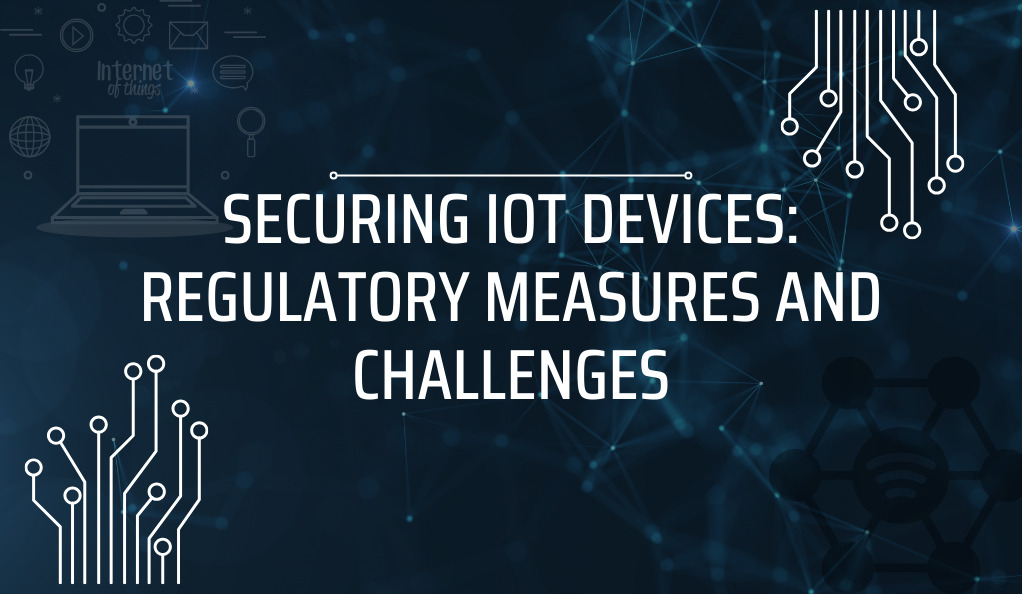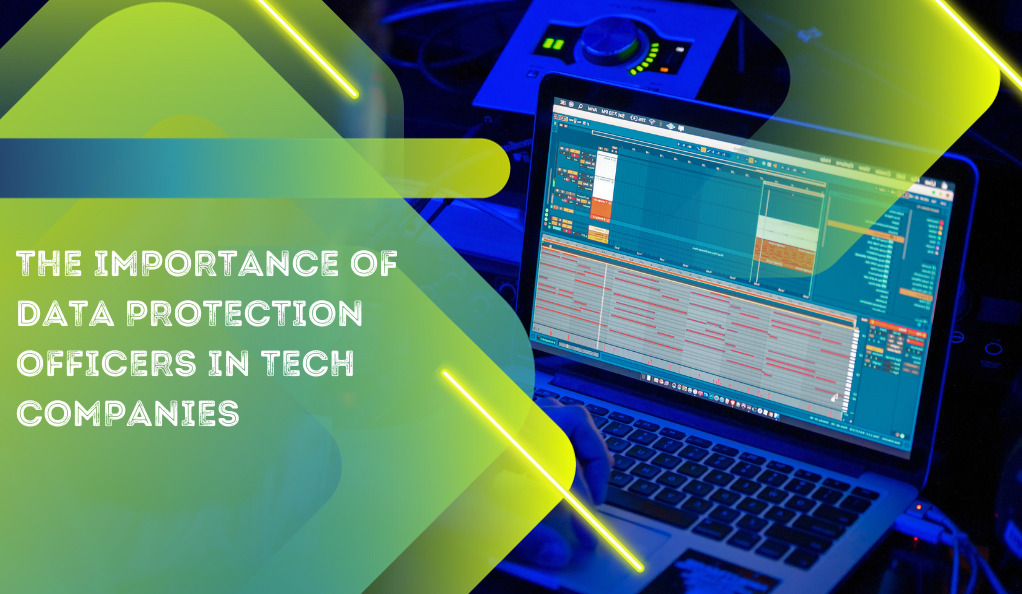In today’s rapidly evolving digital landscape, the importance of human involvement in compliance adherence cannot be overstated. As organizations increasingly rely on technology to store, process, and transmit sensitive information, the human element remains a critical factor in ensuring that these processes are carried out securely and in accordance with regulatory standards.
The Changing Landscape of Compliance in the Digital Age
The digital age has brought about a paradigm shift in the way organizations operate. With the proliferation of digital platforms, cloud computing, and the Internet of Things (IoT), the volume of data being generated and stored has grown exponentially. This data, often sensitive in nature, requires stringent measures to ensure its integrity, confidentiality, and availability.
| Era | Primary Data Storage | Compliance Challenge |
|---|---|---|
| Pre-digital | Physical files | Limited access, physical theft |
| Early Digital | Local servers | Unauthorized access, data corruption |
| Cloud Era | Cloud storage | Data breaches, multi-jurisdictional compliance |
| IoT & Beyond | Distributed networks | Real-time security, edge computing challenges |
As depicted in the table above, each era presents its unique set of challenges. The pre-digital era was primarily concerned with physical theft and limited access. As we transitioned into the digital age, concerns shifted towards unauthorized access and data corruption. The advent of cloud computing brought about challenges related to data breaches and the complexities of adhering to compliance standards across multiple jurisdictions. The future, characterized by IoT and distributed networks, will demand real-time security solutions and strategies to address edge computing challenges.
The Human Element: A Constant Amidst Change
While technology continues to evolve, the human element remains a constant. Employees, stakeholders, and end-users interact with these systems daily, making them both the first line of defense and the potential weakest link. A single misstep, whether intentional or accidental, can lead to significant breaches, emphasizing the need for continuous training, awareness, and adherence to compliance protocols.
| Aspect | Human Element | Technological Solutions |
|---|---|---|
| Strengths | Intuition, adaptability, understanding context | Speed, scalability, consistency |
| Weaknesses | Susceptibility to errors, limited processing speed | Vulnerability to technical glitches, rigidness |
| Role in Compliance | Decision-making, oversight, real-time adjustments | Automation, data processing, real-time monitoring |
The Role of HIPAA in Compliance
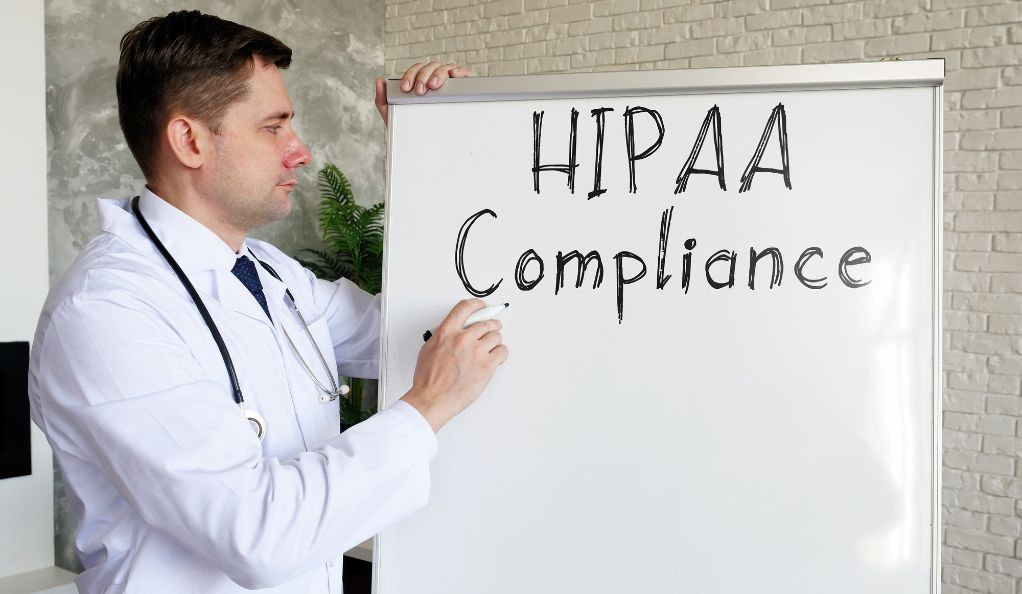
The Health Information Portability and Accountability Act (HIPAA) stands as a testament to the importance of data protection, specifically in the healthcare sector. Established in 1996, HIPAA was designed to ensure the confidentiality and security of healthcare information, setting a benchmark for data protection standards worldwide.
HIPAA’s Foundational Principles
HIPAA revolves around two primary rules: the Privacy Rule and the Security Rule.
- The Privacy Rule focuses on the right of individuals to control the dissemination of their personal health information. It delineates the circumstances under which personal health information can be used or disclosed, ensuring that individuals retain significant control over their data.
- The Security Rule establishes standards for the protection of electronic health information. It mandates that covered entities implement specific administrative, physical, and technical safeguards to ensure the confidentiality, integrity, and security of electronic protected health information.
| Provision | Description |
|---|---|
| Protected Health Information (PHI) | Refers to any information about health status, provision of healthcare, or payment for healthcare that can be linked to a specific individual. |
| Covered Entities | Health plans, healthcare clearinghouses, and healthcare providers who transmit health information electronically. |
| Business Associates | Persons or entities performing functions or activities on behalf of, or providing services to, a covered entity that involves the use or disclosure of PHI. |
| Minimum Necessary Rule | Covered entities must make reasonable efforts to use, disclose, and request only the minimum amount of PHI needed to accomplish the intended purpose. |
HIPAA in the Modern Context
With the surge in digital health platforms, telemedicine, and electronic health records, HIPAA’s relevance has only grown. The act has been adapted over the years to address the challenges posed by technological advancements. For instance, the HITECH Act of 2009 expanded the responsibilities of business associates under HIPAA, recognizing the increasing role of third-party vendors in the healthcare ecosystem.
The Human Element in HIPAA
While the technical and administrative aspects of HIPAA are crucial, the human element remains at its core. Every individual in the healthcare ecosystem, from administrative staff to healthcare providers, plays a pivotal role in ensuring the protection of sensitive health information.
Critical Obligations Towards Training and Awareness
Training and awareness are the cornerstones of HIPAA compliance. Without a well-informed workforce, even the most robust technical safeguards can fall short.
- Regular Training Sessions: All staff members, regardless of their role, should undergo regular HIPAA training. This ensures that they are up-to-date with the latest regulations and understand the implications of non-compliance.
- Real-life Scenarios: Training should not be limited to theoretical knowledge. Incorporating real-life scenarios and case studies can help staff understand the practical implications and consequences of data breaches.
- Continuous Awareness Campaigns: Beyond formal training, continuous awareness campaigns can serve as reminders for staff. This can include posters, email reminders, and regular updates on the latest threats and best practices.
Human Resources Policy: The Backbone of Compliance
Human resources play a pivotal role in ensuring HIPAA compliance. From hiring practices to termination procedures, every HR decision can impact an organization’s compliance posture.
- Background Checks: Before hiring, especially for roles with access to sensitive health information, thorough background checks should be conducted.
- Access Control: HR, in collaboration with IT, should ensure that employees have access only to the information necessary for their roles. This principle, known as the “least privilege,” minimizes the risk of unauthorized access.
- Termination Procedures: When an employee leaves the organization, it’s crucial to revoke their access rights immediately. This prevents any potential misuse of data post-employment.
Training and Awareness: The First Line of Defense
In the realm of data protection, especially in the healthcare sector, the human factor often emerges as both the strongest asset and the most significant vulnerability. Proper training and consistent awareness campaigns are essential in ensuring that this human factor leans more towards being an asset than a liability.
The Significance of Continuous Training
Continuous training is not just a regulatory requirement; it’s a necessity in the ever-evolving landscape of data protection.
- Adapting to New Threats: Cyber threats are not static. As technology advances, so do the techniques employed by malicious actors. Regular training ensures that staff are prepared to recognize and respond to the latest threats.
- Reinforcing Best Practices: Even the most well-trained individuals can become complacent or forgetful over time. Regular training sessions serve as reminders and reinforce best practices.
Elements of an Effective Training Program
Interactive Sessions: One of the foundational elements of an effective training program is the incorporation of engaging training modules. These modules are designed to encourage active participation from attendees, ensuring they are not just passively listening but are actively engaged in the learning process.
Assessment & Feedback: After the training sessions, it’s crucial to gauge the understanding and retention of the participants. This is achieved through post-training assessments. Moreover, to ensure the training remains effective and relevant, feedback mechanisms are put in place, allowing for continuous improvement based on the participants’ insights and experiences.
Real-world Simulations: Theoretical knowledge, while essential, needs to be complemented with practical experience. To this end, simulated cyber-attack exercises are conducted. These simulations provide a controlled environment where staff can test their knowledge and response strategies, preparing them for real-world scenarios.
Certification: To further enhance the value of the training program, certifications are offered upon completion. These certifications not only serve as a testament to the individual’s understanding and proficiency but also act as an incentive, recognizing their dedication to the training process and encouraging further participation.
Awareness Beyond the Classroom
While formal training sessions are crucial, fostering a culture of data protection requires continuous awareness efforts.
- Regular Updates: With the rapid pace of technological change, monthly or even weekly updates on the latest threats and best practices can be invaluable.
- Visual Reminders: Posters, screensavers, and infographics placed strategically around the workplace can serve as daily reminders of the importance of data protection.
- Whistleblower Policies: Encouraging employees to report suspicious activities without fear of repercussions can catch potential breaches before they escalate.
Human Resources Policy: Safeguarding Information
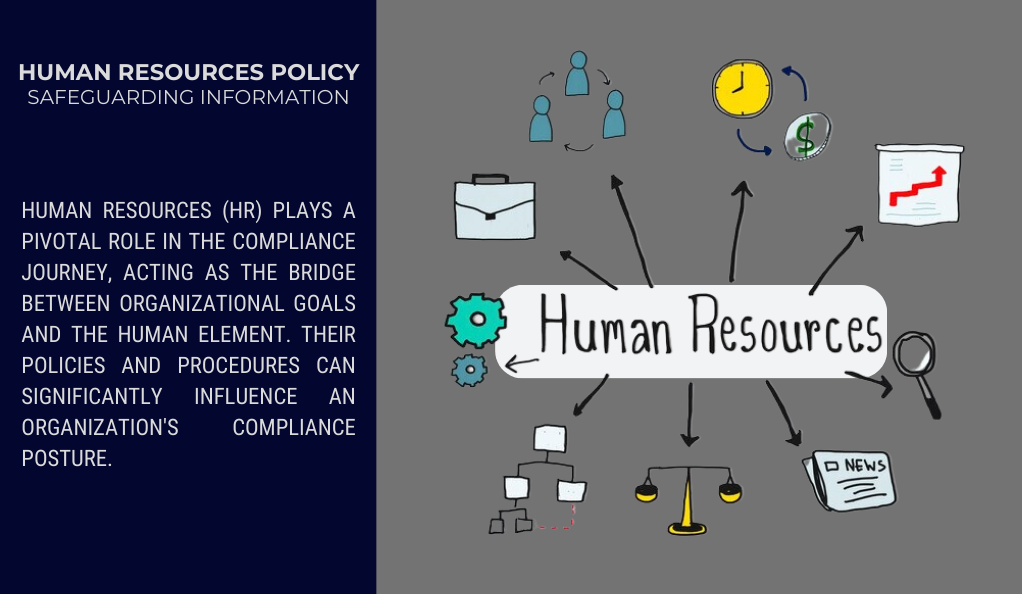
Human Resources (HR) plays a pivotal role in the compliance journey, acting as the bridge between organizational goals and the human element. Their policies and procedures can significantly influence an organization’s compliance posture.
The Role of HR in Ensuring Compliance
HR is not just about hiring and firing; it’s about fostering a culture of compliance and ensuring that every individual understands their role in the larger compliance framework.
- Onboarding Process: The journey to compliance begins the moment a new employee steps into the organization. The onboarding process should introduce them to the organization’s compliance policies, emphasizing their role in upholding these standards.
- Continuous Evaluation: Regular performance evaluations should not just focus on job-specific tasks but also on an individual’s adherence to compliance protocols.
- Exit Protocols: When an employee leaves, HR must ensure that all access to sensitive information is revoked immediately, and the departing individual understands the continuing obligation to maintain confidentiality.
HR’s Role at Different Employee Touchpoints
Recruitment: Human Resources (HR) begins its pivotal role in compliance during the recruitment phase. At this stage, HR ensures that potential hires not only fit the job role but also understand the importance of compliance and express a willingness to uphold the organization’s standards.
Onboarding: Once an individual is hired, the onboarding process becomes a critical juncture. HR introduces new hires to the organization’s compliance policies, ensuring they receive initial training and grasp the significance of their role in upholding these standards.
Continuous Training: As employees settle into their roles, continuous training becomes essential. HR collaborates with the compliance team to organize regular training sessions, ensuring that the workforce remains updated on the latest compliance standards and practices.
Performance Evaluation: Furthermore, during performance evaluations, HR doesn’t solely focus on job-specific tasks. Instead, they also assess an individual’s adherence to compliance protocols, ensuring that maintaining standards is recognized as a key performance indicator.
Exit: Lastly, when an employee decides to leave the organization, the exit process managed by HR becomes crucial. At this point, HR takes steps to revoke the departing individual’s access rights to sensitive information. They also conduct exit interviews to gather feedback and reinforce the importance of data confidentiality post-employment, ensuring that former employees understand their continuing obligation to maintain the confidentiality of any sensitive information they had access to during their tenure.
Challenges Faced by HR in Compliance Adherence
While HR plays a crucial role in compliance, they also face several challenges:
- Rapid Technological Changes: With technology evolving at a breakneck pace, ensuring that all employees are up-to-date becomes a daunting task.
- Balancing Compliance and Flexibility: While stringent rules can ensure better compliance, they can also stifle innovation and flexibility. Finding the right balance is key.
- Global Workforce: For organizations with a global presence, ensuring compliance across different regions, each with its regulations, can be challenging.
Challenges in Implementing Compliance Measures
Implementing compliance measures, especially in a dynamic and complex environment, is no small feat. Organizations face a myriad of challenges, ranging from technological hurdles to human-centric issues.
Striking the Balance: Compliance vs. Operational Efficiency
One of the most significant challenges organizations face is finding the right balance between stringent compliance measures and maintaining operational efficiency.
- Over-regulation: While it’s essential to have rules in place, over-regulation can stifle innovation, slow down processes, and lead to inefficiencies.
- Under-regulation: On the flip side, lax rules can expose the organization to vulnerabilities, leading to potential breaches and non-compliance penalties.
Addressing the Human Element in Information Security
While technology can be programmed and controlled, the human element remains unpredictable. Ensuring that every individual, from top management to the newest hire, understands and adheres to compliance measures is a constant challenge.
- Training Gaps: Not all employees have the same level of understanding or expertise when it comes to compliance. Addressing these gaps is crucial.
- Resistance to Change: Introducing new compliance measures, especially those that alter existing workflows, can meet resistance. Managing this change is vital for successful implementation.
Keeping Up with Evolving Regulations
Compliance isn’t static. As technology evolves, so do the regulations governing them. Keeping up with these changes, understanding their implications, and implementing them in a timely manner is a significant challenge.
The Future of Compliance Adherence
As we stand on the cusp of a new era marked by rapid technological advancements, the landscape of compliance is set to undergo significant transformations. It’s imperative for organizations to not only adapt to the present but also to anticipate and prepare for the future.
The Evolving Nature of Compliance in the Face of Technological Advancements
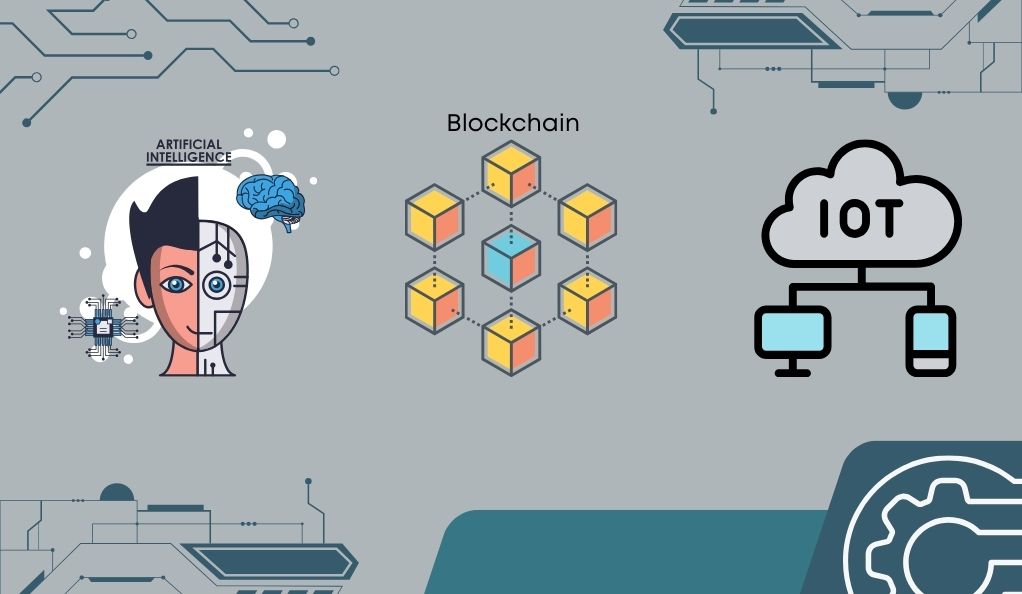
The integration of emerging technologies into organizational processes will inevitably lead to new compliance challenges.
- Artificial Intelligence (AI) & Machine Learning (ML): As AI and ML become integral to decision-making processes, ensuring that these systems operate within regulatory boundaries becomes crucial. Additionally, the data used to train these models must adhere to compliance standards.
- Blockchain & Distributed Ledgers: While blockchain promises enhanced security and transparency, it also presents challenges, especially in sectors where data modification or deletion is a regulatory requirement.
- Internet of Things (IoT): The proliferation of connected devices expands the data footprint, necessitating robust compliance measures to safeguard this vast and varied data.
Preparing for Future Challenges
To stay ahead of the curve, organizations must adopt a proactive approach:
- Continuous Learning: Organizations should invest in training programs that not only address current compliance requirements but also anticipate future challenges.
- Collaboration: Collaborating with industry peers, regulatory bodies, and technology experts can provide insights into emerging trends and best practices.
- Agile Frameworks: Adopting agile frameworks can help organizations quickly adapt to changing regulations and implement necessary measures in a timely manner.
Ensuring Continuous Adherence
The future will demand more than just periodic compliance checks. Continuous adherence, marked by real-time monitoring and immediate corrective actions, will become the norm.
- Integrated Compliance Platforms: Advanced platforms that integrate with organizational processes, offering real-time monitoring and automated compliance checks, will play a pivotal role.
- Feedback Loops: Establishing feedback loops where potential compliance issues are immediately flagged and addressed will be crucial.
Conclusion
In the ever-evolving landscape of compliance, the human element stands central. While technology offers tools for adherence, it’s the individuals within organizations who determine the success of compliance initiatives. Continuous training, awareness, and a proactive mindset are essential. As we navigate the challenges of the digital age, collaboration, adaptability, and an emphasis on the human factor will be pivotal. The journey of compliance is ongoing, demanding both technological solutions and human oversight. By valuing and investing in the human element, organizations can ensure a secure and compliant future.


